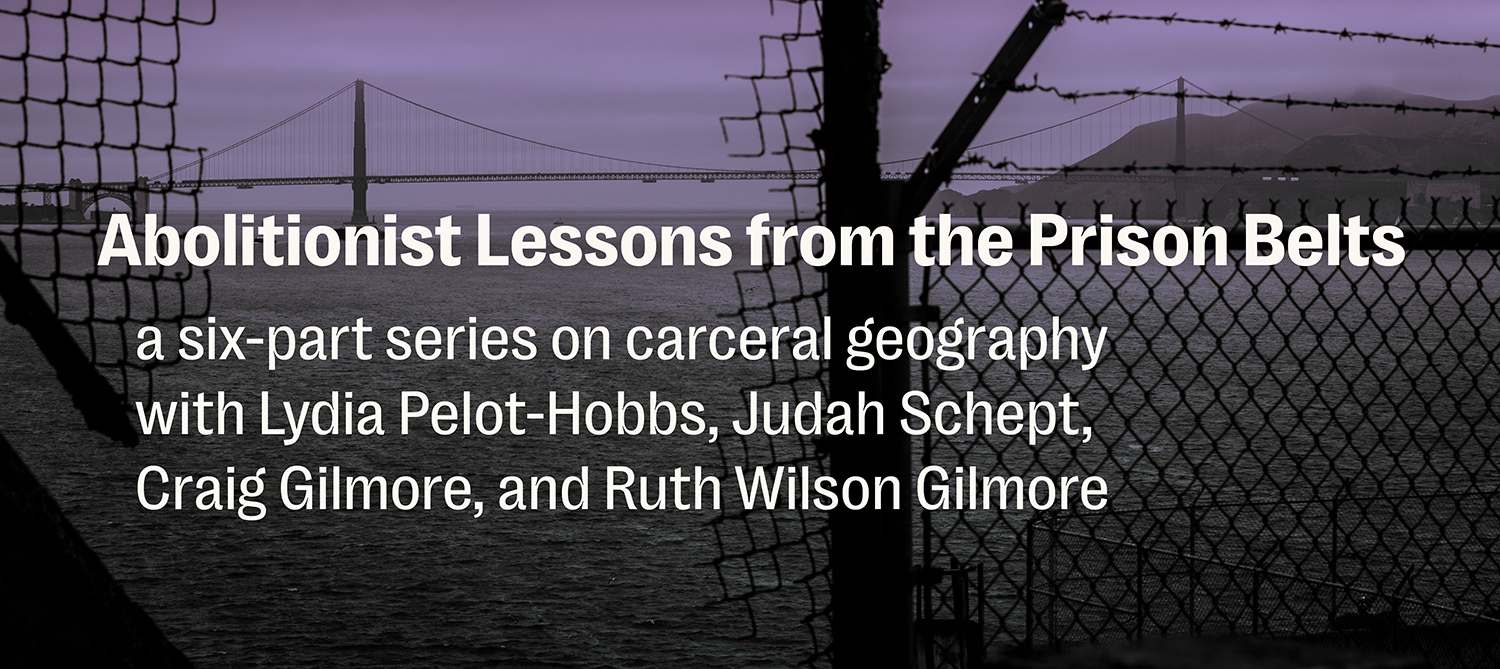
To close, we reflect on the preparatory work that allows organizations to work with people coming to grips with a crisis, providing both useful awareness and practical things to do with their energy. Everyone doing political work—especially our opponents—is doing this. When a crisis emerges, and more and more people come to the conclusion that our social life cannot be reproduced on the same basis as it was yesterday, organized actors flood in to push their interpretation of the problem, and thus propose and enforce their ideas for potential resolutions, however unchanging those answers may be. Reflecting on a few examples of this process allows us to think about the tasks ahead, forming and working within organizations to ensure that enough organized people have the common sense and practical vehicles to intervene with force when the next catastrophic crisis erupts.
Judah Schept: We had the idea that a fitting coda to this series of conversation would be a discussion of taking crises as opportunities.
Lydia Pelot-Hobbs: Crises are opportunities, and you have to be ready for them. It’s not simply that a crisis spurs people to action. We need to have built out the organizational capacity to bring people into action when these crisis moments come into being. There has been a handful of recent inflection points—2008 and the financial crisis, 2016 when Trump was first elected, 2020 with the pandemic and uprisings, Gaza and Trump again now. Where are there the organizational capacities to harness people’s energy when people are understandably, justifiably outraged and either newly politicized or newly activated? At the 2024 Socialism Conference, I went to a great panel about the UAW organizing around Palestine detailing what organizing at union locals has been like, from getting ceasefire statements passed to agitating against military manufacturing. What really struck me was how the UAW has been able to offer organizational capacity for Palestine solidarity. UAW members didn’t say, “Let’s start a totally new organization.” Instead they decided the union could be a key site of struggle for Palestine liberation. The infrastructure of organizing can take the form of any number of different kinds of spaces that folks are able to—to paraphrase Ruthie—renovate and reimagine.
The biggest challenge is that we have these sparks and then they fizzle. One day there’s countless people in the streets, and then the energy dissipates. How does that energy actually get held and channeled for the long-haul work? Where can you walk into a room and join an organization? What are those spaces that can be activated at different moments? How do we prepare for and consolidate following these inflection points?
More from our decarceral brainstorm
Inquest, finalist for the 2025 National Magazine Award for General Excellence, brings you insights from the people working to create a world without mass incarceration.
Sign up for our newsletter to get the latest in your inbox every Saturday.
Newsletter
Judah Schept: It’s worth pointing out that crises are opportunities for all kinds of factions—for us, but also for fascists, for liberals, for conservatives. I recently reread Naomi Murakawa’s “Say Their Names, Support Their Killers: Police Reform After the 2020 Black Lives Matter Uprisings,” about the passage of over a hundred laws just in 2020 that were aimed at police reform. They bore names like the “George Floyd this” or the “Breonna Taylor that,” but what they did was give more money to the cops. There’s always those kinds of forces that are ready to seize crises as opportunities to reform and expand existing capacities, and whose existing organizational infrastructure—the state, of course, but also carceral nonprofits—is often more established and therefore more prepared to narrate the crisis into common sense and harness energy for change into their preferred settlement.
I was also thinking about Palestine when I was thinking about this question this morning, but of Palestine from a different moment. During the 2014 Israeli war on Gaza, in which Israel killed over 2,000 Palestinians and injured an additional 10,000, Jewish Voice for Peace (JVP) saw an exponential increase in its membership. Just like you’re saying, Lydia, they had this existing organizational infrastructure; they had the political education in place to organize and accept lots of Jewish people who, if they weren’t yet anti-Zionists, were moving in that direction and were likely asking some foundational questions. And JVP was essentially there to welcome them and to say, “Here you go. Here is this formation. We’re here to help you make sense of this and figure out what to do about it.” I don’t think you would have had the kinds of organizing, mobilizations, protests, and uprisings that have characterized the last eighteen months if JVP hadn’t been doing that work since it was founded in 1996, and certainly not in and since 2014, when the organization clearly saw the crisis as an opportunity to build out the capacity of the Palestine solidarity movement.
Craig Gilmore: One of the interesting things for me about the JVP campaign was that it seemed for a long time that they were anti-Zionist without naming themselves as anti-Zionist. And that was their political education strategy: they were doing outreach to young, possibly newly questioning or more deeply questioning Zionists. That was their audience. And they got them by not saying, “We’re anti-Zionist, you should join us.” But rather by being anti-Zionist and not saying it quite out loud. Now there’s a lesson for those of us doing anti-carceral work in that approach. Who are we trying to reach and what are they going to hear? And also what words are going to send them running out of the room?
Judah Schept: You know, I will also say as a brief personal anecdote, I owe a lot to Ari Wohlfeiler (formerly of both Critical Resistance and Jewish Voice for Peace) for my emergent abolitionism and my emergent anti-Zionism in the early 2000s. Because Ari was someone who was already there politically in a moment where I was becoming, and whose clarity, generosity, and patience helped me to make those connections, in both cases, separately and together. Just to your point, Craig, about the approaches we might take both organizationally and interpersonally.
Ruth Wilson Gilmore: When we started Californians United for a Responsible Budget (CURB)—a deliberately bland name!—in December 2003, our entire purpose was to cast as wide a net as possible to attract people who could pause to think again about what it was they thought should be happening. It began as meetings of organizations, not individuals. CURB is now in its twenty-second year, and it is very much in the vanguard of prison closures, of stopping new prisons and jails, of doing so much stuff. And I’ll also say that the organization raised up its own leadership from within. The people who run it now are people who came up through it.
Craig Gilmore: To go back to one of the things that Lydia said when we started, part of being prepared for a crisis is thinking about the structural conditions that are producing whatever your short-term target is—you know, the jail you’re stopping—thinking of that in a bigger structural historical context, such that you’re thinking about what the next crisis might be. It’s not like you know when it will happen or exactly how it will play out, but you’re ready. You’ve got things to say, immediately. And in fact, you’ve been saying them to the UAW, to JVP, to whoever, for years in preparation. So, you know, what you were saying about the 2014 incursion in Gaza: JVP was prepared for that. They’d been preparing their members for it for years. I think that’s a lesson for us that we need to have a long-term vision about not just where we want to go, but where we’re going to be forced to go—what the other side is going to do, including the crises that they’re going to provoke.
Ruth Wilson Gilmore: Yes. I think I learned from you, Craig, that the definition of luck is preparation plus opportunity. We make ourselves lucky by being prepared, and having a sturdy theoretical sensibility that’s not mechanistic. Our creative aggression encourages us to use and make models, rather than look for and follow blueprints.
Image: Mitchell Y / Unsplash




